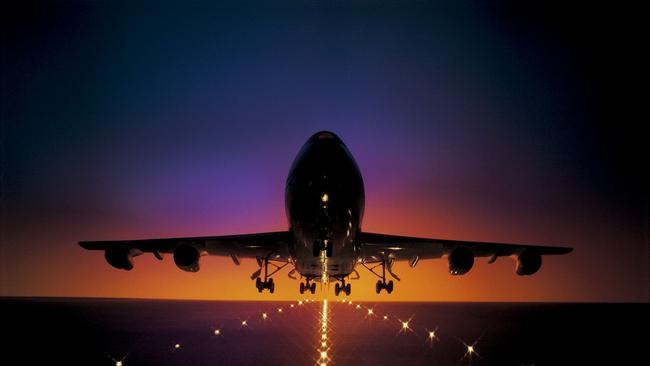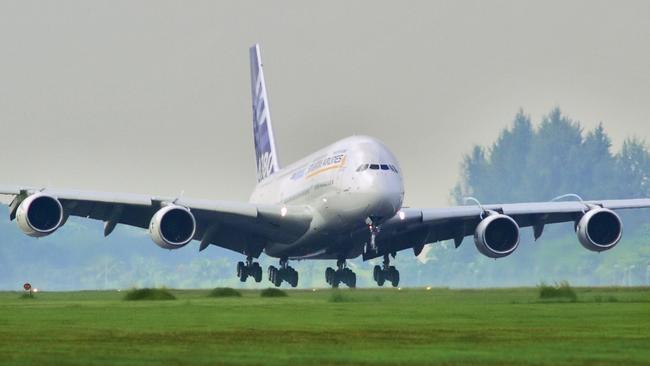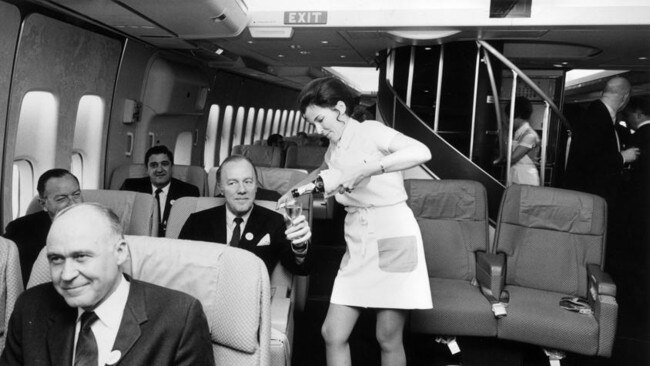The jumbo jet was the pinnacle of air luxury – now its days are numbered
Boeing and Airbus are winding down production of the 747 and A380, planes that ended up being too big for their own good.

It’s time to eulogise the passing of the 747 and A380, engineering marvels that defied gravity, tantalized travellers with luxurious cabin space and opened intercontinental travel to the masses by making cheap fares plentiful.
The pandemic sped up their demise, which seemed inevitable regardless. There’s little doubt air travel will see weaker demand for several years, which is a killer for enormous aeroplanes that require strong demand to fill seats. The losses will be mourned by many travellers, and will be particularly hard on aeroplane aficionados for whom these incredible machines represented jet nirvana.
But from the beginning, both jumbo jets were too big for most markets, and the only way airlines could fill them was by offering very cheap fares. And while travellers profit from cheap fares, airlines don’t.
Boeing announced at the end of July that it would discontinue 747 production in 2022 when it finishes building the last 15 freighters on order. The last passenger version of the 747 was delivered in 2017, though two planes built for an airline but never delivered will become Air Force One presidential transport.

Almost all 747s at passenger airlines are grounded, according to Cirium, an aviation data and analytics company. Several big airlines that fly the older 747-400 say those planes are done. The newer 747-8, flown by three airlines, likely will return to service. There are just 35 of those.
Airbus announced in February that it will end production of its superjumbo A380 in 2021, again after the last remaining dozen or so aeroplanes on order are delivered. You might say airlines announced the end of the A380 long ago because big orders just never materialised, except at Emirates. “The A380 is not only an outstanding engineering and industrial achievement. Passengers all over the world love to fly on this great aircraft. Hence today’s announcement is painful for us,” Airbus said when announcing the end of production. “A380s will still roam the skies for many years to come.” All but 18 A380s at passenger airlines are grounded, according to Cirium. Air France says its A380s are permanently retired. Other airlines are also unlikely to bring back the behemoth.
The 747 was the true revolutionary of the two. The plane was originally conceived as a cargo jet. Elevating the cockpit to an upper deck allowed for a nose hatch for easy loading and unloading and the ability to carry full-size pallets almost the entire length of the plane.
Its debut in 1969 dazzled at a time when jet aeroplanes were still relatively new to the world. Airlines loved the aeroplane for its long range more than its massive cabin space. Its current version can take off weighing close to 1 million pounds and fly 9,200 miles. In the beginning, some made the upper deck a very exclusive lounge with a piano by the bar.
“The 747 was kind of like a cruise ship, a throwback to the flying boat, ” says Scott Hamilton, aviation analyst and managing director of Leeham Co. “It just brought a whole new standard of luxury.”

The 747 really did fly the world to globalisation. Many people took their first overseas trip on one. Backpackers could get around the world easily. Families could go way beyond Disney World. Cargo could move more easily and cheaply, too, since the aeroplane had a really big belly.
In recent years, upperdeck business-class became the favourite of many travellers. One big reason passengers loved the big jets was the spacious feeling even when seats were squeezed together. Like a huge SUV today, big cabins don’t feel like typical airline sardine cans.
Boeing says it delivered 1,556 747s, including freighters, over 50 years. For many aviation enthusiasts, its memory will always be a blessing.
Not so for the A380. It has proven to be a colossal mistake. “In aircraft heaven, the 747 will be there. The A380 will not,” says Richard Aboulafia, vice president for analysis at Teal Group, an aerospace and defence research firm.
The A380 was officially launched in 2000. Its first flight was 2005, and it entered into airline service in 2007 with Singapore Airlines, with Airbus predicting sales of 1,200 jets. Instead, Airbus has delivered just 242.
Theories abound on why France-based Airbus went ahead with a massively expensive project that seemed so obviously ill-conceived from the start. It coincided with the early years of the European Union, and a big industrial project that created work across multiple European countries was seen as a good thing.
In addition, Airbus wanted a complete product line to compete against Boeing, and that meant having a jumbo jet. And many believed that airport hubs, particularly in Europe, would get increasingly congested, so a giant aeroplane that maximised each precious takeoff and landing slot had to be the future of travel.
Instead, travellers and airlines had already begun to favour smaller planes and non-stop flights to destinations that avoided connections in big hubs.
“The handwriting was on the tombstone and they just kept whistling past, ” says Mr Aboulafia. “There was so much regional pride wrapped up in it.” The aeroplane itself had many limitations despite its size. The A380, weighing a maximum 1.3 million pounds at takeoff, is essentially two wide-body cabins slapped one on top of the other. But it had only one cargo belly, and most of that was for fuel and passenger baggage. Very little cargo space made the economics of the plane more challenging for airlines. Airbus’s twin-engine A350 has twice as much cargo capacity as the much larger four-engine A380, according to Mr Aboulafia.
Boeing was already banking on a fragmented future of air travel – those non-stop flights to secondary cities. Instead of having to connect in London, Paris or Frankfurt, why not fly non-stop to Nice or Venice or Zurich on a smaller plane with long range?
The Boeing 787, which seats about 300, and the Airbus A350, which typically carries 350 to 400 passengers, killed the A380, which typically seats 550, and the 747, which usually has more than 415 seats. The Boeing 777 also comes close to 747 capacity but flies more economically, with two engines instead of four.
“The undisputedly successful aeroplane is the 787. That’s Boeing’s one success right now,” says Mr Hamilton. Boeing’s 737 production was halted with the MAX grounding and its 777 production rate will drop to two aircraft per month from three starting next year as that program struggles to launch a new version. Boeing acknowledged that the aeroplane market was smaller in a July letter to employees. “The commercial marketplace is different, and we must change with it,” Chief Executive Dave Calhoun wrote.
Mr Hamilton notes while travellers will miss the less claustrophobic feeling in the big cabins of the 747 and A380, some aspects won’t be mourned.
“You won’t miss the queues for the lavatory. You won’t miss the huge wait at the baggage-return area. You won’t miss the vastly overcrowded gate boarding area,” Mr Hamilton says.
But you may miss the prestige.
Wall Street Journal






To join the conversation, please log in. Don't have an account? Register
Join the conversation, you are commenting as Logout